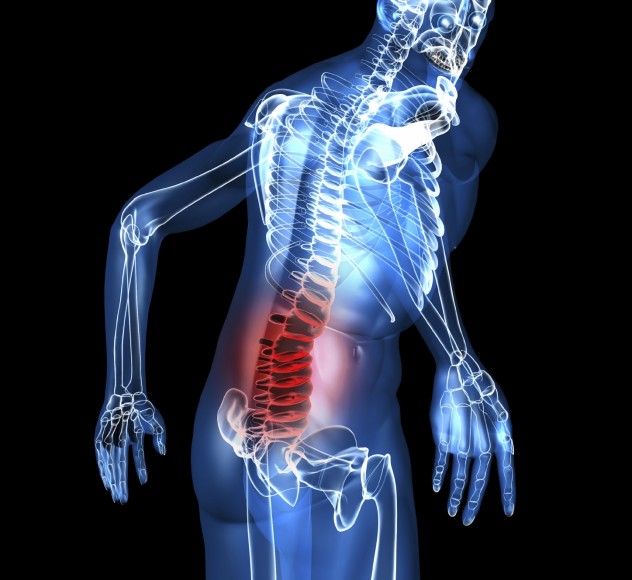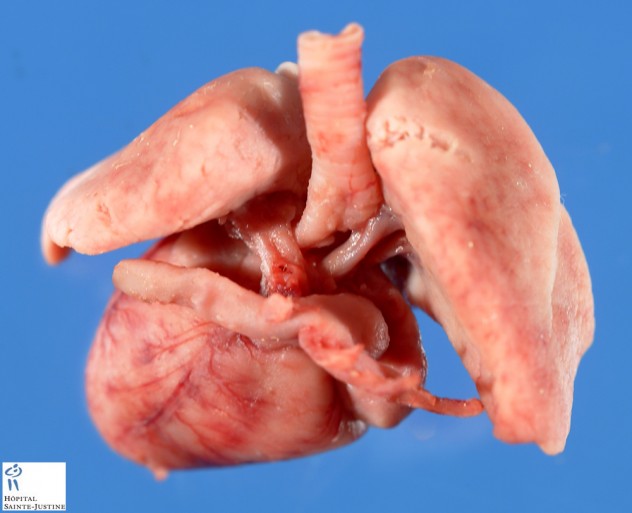 Our World
Our World  Our World
Our World  Pop Culture
Pop Culture 10 Incredible Female Comic Book Artists
 Crime
Crime 10 Terrifying Serial Killers from Centuries Ago
 Technology
Technology 10 Hilariously Over-Engineered Solutions to Simple Problems
 Miscellaneous
Miscellaneous 10 Ironic News Stories Straight out of an Alanis Morissette Song
 Politics
Politics 10 Lesser-Known Far-Right Groups of the 21st Century
 History
History Ten Revealing Facts about Daily Domestic Life in the Old West
 Weird Stuff
Weird Stuff 10 Everyday Products Surprisingly Made by Inmates
 Movies and TV
Movies and TV 10 Actors Dragged out of Retirement for One Key Role
 Creepy
Creepy 10 Lesser-Known Shapeshifter Legends from Around the World
 Our World
Our World 10 Science Facts That Will Change How You Look at the World
 Pop Culture
Pop Culture 10 Incredible Female Comic Book Artists
 Crime
Crime 10 Terrifying Serial Killers from Centuries Ago
Who's Behind Listverse?

Jamie Frater
Head Editor
Jamie founded Listverse due to an insatiable desire to share fascinating, obscure, and bizarre facts. He has been a guest speaker on numerous national radio and television stations and is a five time published author.
More About Us Technology
Technology 10 Hilariously Over-Engineered Solutions to Simple Problems
 Miscellaneous
Miscellaneous 10 Ironic News Stories Straight out of an Alanis Morissette Song
 Politics
Politics 10 Lesser-Known Far-Right Groups of the 21st Century
 History
History Ten Revealing Facts about Daily Domestic Life in the Old West
 Weird Stuff
Weird Stuff 10 Everyday Products Surprisingly Made by Inmates
 Movies and TV
Movies and TV 10 Actors Dragged out of Retirement for One Key Role
 Creepy
Creepy 10 Lesser-Known Shapeshifter Legends from Around the World
10 More Truly Weird Medical Problems
Medical Research and the study of Human Health are subjects that offer an extensive and ever expanding range of puzzling and in some cases, disturbing phenomena. The lesser known, exceptional or downright weird occurrences in the medical field thus continue to fascinate Listverse readers and scientists alike. In this new and unusual account, we discover how contact lenses can trigger blindness, consider cases of infant development outside of the womb, learn why potato chips could make you angry, and explore a mysterious infection that discriminates by sex.
10Cold Urticaria

While most allergies are in response to physical stimuli, Cold Urticaria is an allergic reaction to cold temperatures. It is triggered when the immune system is exposed to sudden drops in temperature or contact with a chilled object. Hives, swelling and severe itching may result from attacks of Cold Urticaria, while falling in cold water or spending too much time in a walk-in freezer could prove fatal for the most severely affected. The condition is diagnosed by testing with ice cubes, and immune support therapies may be prescribed in addition to relocating to a warmer climate.
9Ectopic Pregnancy

Pregnancy begins when the sperm successfully merges with an egg, which begins to develop inside the uterus as an embryo. However, in around one percent of pregnancies, the fertilized egg becomes lodged outside the uterus and the embryo develops in what is known as an ectopic pregnancy. The fallopian tubes linking the ovaries to the uterus are the location accounting for the majority of ectopic pregnancies. As the fetus develops outside the normal location, severe medical complications may result, leading to death when proper medical care is not provided. Ectopic pregnancies are normally terminated to prevent fatal complications, but in rare cases, babies have been delivered alive and healthy after developing entirely outside of the womb.
8Smoker’s Penile Reduction

Smoking is often associated with lung cancer or increased respiratory illness, but one of the primary effects of smoking is its ability to constrict and interfere with circulation. Nicotine tightens blood vessels, while calcification and increased carbon monoxide levels associated with the practice further impair the human cardiovascular system. The potential for heart disease comes to mind, but it turns out for men that lighting up sticks may affect another very important stick: The blood vessels in the penis are only half the size of those in the heart, and are even more rapidly compromised by the effects of smoking. Studies suggest that men who smoke may experience a certain reduction in both flaccid and erect penis size as a result.
7Human Spinal Cord Redundancy

The spinal cord forms a tightly wired nerve bundle that is both complex and easily injured. While complete severing of the spinal cord will generally remove all function below the injury site, the spinal cord is different from a manmade electronic cable in that impairment levels do not correspond to the degree of spinal damage. The spinal nerves are in fact highly redundant and interconnected, so even a 90 percent gap in the spinal cord may not deprive a victim of the ability to walk. The implications of this include the fact that a cure for spinal cord injuries may be easier to achieve than once thought. Partial, “random” regeneration, rather than nerve by nerve reconnection, may suffice to return mobility. In an even more bizarre finding, blue dye injections dramatically reduced the impact of spinal cord injuries in rats, a treatment that must be tracked for humans.
6Situs Inversus
 Situs Inversus is a rare condition affecting less than 1 in 10,000 individuals where the main visceral organs in the abdomen and thorax are reversed, or “mirrored” in position. The heart will typically be transposed to the right hand side, while the stomach and spleen trade places with the liver and gall bladder, while the intestines and other organs are “misplaced”. Complications can result from misaligned blood vessels, and those affected often carry a special note affixed to their person to ensure a surgeon would not operate “backwards” on them in the case of a medical emergency. Many with the condition do not realize they have it until it is discovered by a medical professional. Although the condition is rather odd, patients appear normal externally, and can usually live normal lives.
Situs Inversus is a rare condition affecting less than 1 in 10,000 individuals where the main visceral organs in the abdomen and thorax are reversed, or “mirrored” in position. The heart will typically be transposed to the right hand side, while the stomach and spleen trade places with the liver and gall bladder, while the intestines and other organs are “misplaced”. Complications can result from misaligned blood vessels, and those affected often carry a special note affixed to their person to ensure a surgeon would not operate “backwards” on them in the case of a medical emergency. Many with the condition do not realize they have it until it is discovered by a medical professional. Although the condition is rather odd, patients appear normal externally, and can usually live normal lives.
5Contact Lens Blindness
 Acanthamoeba Keratis is the scientific term for the way contact lenses can blind you. While developing nations face the worst water quality threats, most tap water in the United States contains Acanthamoeba microbes. When contact lens users rinse their lenses with tap water, the lenses become coated with the bacteria. If a slight, imperceptible scratch occurs during replacement of the lens, the amoebas may invade the eye, causing an infectious inflammation known as keratitis. The effects of the attack may include swelling, redness and irritation, while severe cases can actually cause blindness. 85 percent of reported infections occurred in contact lens users, suggesting sterile wash, and not tap water should be used to clean contact lenses.
Acanthamoeba Keratis is the scientific term for the way contact lenses can blind you. While developing nations face the worst water quality threats, most tap water in the United States contains Acanthamoeba microbes. When contact lens users rinse their lenses with tap water, the lenses become coated with the bacteria. If a slight, imperceptible scratch occurs during replacement of the lens, the amoebas may invade the eye, causing an infectious inflammation known as keratitis. The effects of the attack may include swelling, redness and irritation, while severe cases can actually cause blindness. 85 percent of reported infections occurred in contact lens users, suggesting sterile wash, and not tap water should be used to clean contact lenses.
4Whipple’s Disease

A man may have to eat a peck of dirt before dying, but the potential to contract Whipple’s Disease means it may have been the dirt that killed him. Tropheryma whipplei bacteria cause a potentially fatal suite of including gastrointestinal lesions symptoms if not properly treated with a round of antibiotics. However, the exact method of contraction remains a rather disturbing mystery of medicine. The organism is far more prevalent in the environment than one would expect based on rates of infection, suggesting infection is highly dependent on body condition, rather than exposure. Especially bizarre is the fact that 87% of infections involve men. Disturbingly, Whipple’s Disease may mimic almost any neurological disorder as bacteria affect the nervous system, hindering detection.
3Potato Chip Rage

Potato Chips—you cannot have just one. But what you might possibly have, according to preliminary researchers, is a case of trans-fat induced personality change. Researchers at the University of California at San Diego conducting a controlled study of several hundred male and female participants found statistically significant increases in hostility and aggressive behaviors resulting from consumption of fast food. The study was controlled for variables such as Caffeine and Nicotine use, and pointed towards an apparent correlation between levels of trans-fatty acids in the diet and behavior. The mechanism for the effects is thought to stem from the ability of trans-fats to interfere with the body’s natural levels of DHEA, a long chain fatty acid that is known to impact mood and act as a natural anti-depressant.
2Muscle Tissue in the Lungs

Abbreviated as LAM, Lymphangioleiomyomatosis is an exceedingly weird lung condition that only affects women, at an average age of around 34, in the vast majority of cases. LAM involves the uncontrolled growth of an unusual type of smooth muscle tissues throughout the lungs, airways and blood vessels of the respiratory system, leading to serious impairments in breathing, and sometimes death. In an even odder twist, the runaway smooth muscle cells may arise from cloned tissue when LAM is of the type associated with the non-malignant tumor disorder known as Tuberous Sclerosis. The disease may be managed to a certain degree, but the fact that symptoms may be mistaken for Asthma may hinder treatment until the disease reaches an advanced stage.
1Parrot Fever

Though a great source of intelligent companionship, pet birds can also give you a potentially fatal case of Psittacosis. Also known as “parrot fever”, Psittacosis is an aggressive, avian form of Chlamydiosis, closely related to the disease better known as a sexually transmitted infection in humans. The infection reached pandemic proportions in the late 1920s following increased importation of parrots from South America, and deaths have occurred from time to time since. The disease may manifest as high fevers, muscle rigidity, and eye irritation, all the way to spleen enlargement, heart distress and brain swelling. Fortunately, death is usually preventable through appropriate antibiotic treatment.
Mike Williams is an ardent follower of science with a passion for the unexplained or unusual. His writing interests include strange medical facts, world mysteries and new technology.








